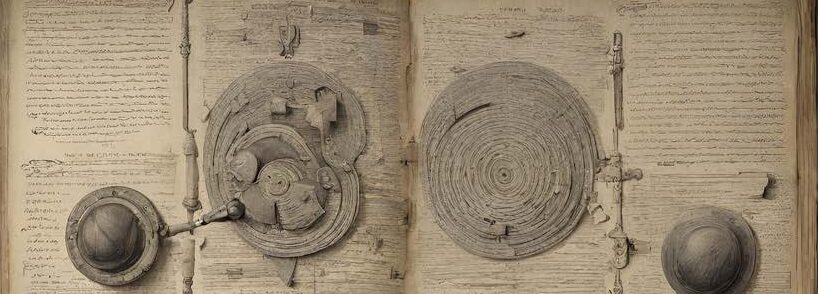History of Number 2 Pencils
According to the Oxford English Dictionary, “a pencil is an instrument for writing or drawing, consisting of a thin stick of graphite enclosed in a long, thin piece of wood or fixed in a cylindrical case”. Pencils were probably the first thing we grabbed in our hands when we first started going to school and learning. No. 2 pencil was the preferred writing tool for school-age kids because it had the perfect blend of hardness (so it wouldn’t break easily) and blackness (for readability), but the lead was soft enough to be erasable (Bennett, 2014). According to Bass (2021), pencils have been around since the 18th century. The first pencils were made in 1785 by Nicolas-Jaques Conté; however, it was Henry David Thoreau who developed the hardness scale ranging from 1 to 4 (Haskins, 2022).
Pencils are labeled based on graphite hardness, and this has an impact on the color of the mark that is left behind (Smith, 2023). Inspired by his father’s pencil factory in Concord, which used graphite that Charles Dunbar had discovered in New Hampshire in 1821, Thoreau worked out how to make a good pencil out of inferior graphite (Wikipedia, 2023). I am familiar with the scales developed by Thoreau as I was an art student, and we were supposed to use different scales for shading, such as the 2H pencil being the lighter one and 8B being more black and darker. Number two pencils, in the midrange of hardness, “are ideal for everyday use” (Smith, 2023).
Mechanical pencils
As I got older, I switched from using number two pencils to mechanical pencils, “also called clutch pencils, which are pencils with a replaceable and mechanically extendable solid pigment core called a lead” (Wikipedia, 2019). According to Faber Castell (n.d.), “mechanical pencils are frequently used because they are reliable, erasable, cheaply refilled, and a very sustainable product.”
I remember when mechanical pencils were first released; they had incredibly thin leads and did not need to be sharpened. Due to the thin leads, my art teacher never let me use these pencils for drawing, even though they became popular because of how well our handwriting looked when we used them. These also have scales, much like Number 2 pencils do; smaller lead sizes, like 0.3 or 0.2 mm, are perfect for fine details and lines, and larger sizes, like 0.9 mm, offer bolder strokes and greater durability (Hawthorne, 2023).
Technological and Environmental Impacts
During the school-to-university transition, I witnessed the switch from traditional pencils to apple pencils. As technology has advanced, people are now using technology-based pencils designed to be written on iPads, though some of them are still using normal pencils. Environmental concerns can be one of the factors in their decreased use of pencils.
According to the United Nations (n.d.), it is estimated that “over 8 million trees are chopped annually to produce pencils that we use on a daily basis, and over 13 million hectares of forests are lost to deforestation, out of which 42% are from the manufacturing of timber-based products that constitute about 18–20 billion pencils”. Aside from environmental considerations, the ease of use of digital platforms is another factor. Apple Pencils facilitate instant corrections and revisions without the need for erasers or physical alterations. This shift toward digital tools not only reflects technological progress but also highlights a growing awareness of sustainability and a desire for a simpler, eco-friendly approach to writing and drawing.
My personal experience with pencils
Personally, pencils played an important role in my life. I loved the variety of shades, and the best part is that you can erase your mistakes, so the mistake you made is not permanent. Pencils are important in writing practices because they are simple to use and require little care. They do not dry out like pens, and there is no need to worry about ink smudging or leaking. I did not like pens much when I was a child because they would occasionally stop working, and I would even sometimes suck the ink when I first started using them. I missed pencils because I did not have to worry about them as much. As I grew older, I began to use pencils less frequently and only used them for artwork. Overall, pencils were a big part of my life and probably the lives of many others, but people now might prefer other tools like pens and apple pencils because of technology and environmental effects.
References
Bass, T. (2021, August 2). Who Invented the Pencil? Www.mentalfloss.com. https://www.mentalfloss.com/article/648189/who-invented-the-pencil
Bennett, H. J. (2014, November 30). Ever wondered about the lead in pencils? Washington Post. https://www.washingtonpost.com/lifestyle/kidspost/ever-wondered-about-the-lead-in-pencils/2014/11/26/f8b5869c-548a-11e4-809b-8cc0a295c773_story.html
Haskins, D. (2022, August 4). What that No. 2 means on school pencils. Kgw.com. https://www.kgw.com/article/travel/whats-in-a-name/what-that-2-means-on-school-pencils/283-3378c11a-1712-4e74-bc51-ce510f571fd6
Hawthorne, M. (2023, May 19). Mechanical Pencil Lead Sizes – A Comprehensive Guide. https://nicholashemingway.com/a-comprehensive-guide-to-mechanical-pencil-lead-sizes/
Mechanical pencil (n.d.-b) Faber Castell. https://www.faber-castell.com/products/24-24-03-mechanical-pencil
Nations, U. (n.d.). Recycling Paper Waste to Make Pencils: An Eco-Friendly Project by Engineering Students in India. United Nations. https://www.un.org/en/academic-impact/recycling-paper-waste-make-pencils-eco-friendly-project-engineering-students-india
Oxford Languages (2020). The Oxford English Dictionary | Oxford Languages. Languages.oup.com. https://www.oed.com/dictionary/pencil_n?tab=meaning_and_use&tl=true#31551592
Ritter, S. (n.d.). C&EN: WHAT’S THAT STUFF? – PENCILS & PENCIL LEAD. Pubsapp.acs.org.https://pubsapp.acs.org/cen/whatstuff/stuff/7942sci4.html#:~:text=Red%20cedar%20from%20Kenya%20and
Smith, S. (2023, March 14). This Is Why You Only See No. 2 Pencils. Reader’s Digest. https://www.rd.com/article/see-number-two-pencils/
Wikipedia Contributors (2023, September 21) Pencil. Wikipedia; Wikimedia Foundation. https://en.wikipedia.org/wiki/Pencil
Wikipedia Contributors. (2019b, October 20). Mechanical pencil. Wikipedia; Wikimedia Foundation. https://en.wikipedia.org/wiki/Mechanical_pencil







